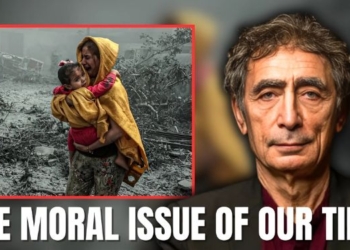Take a break from cyberspace, head into nature, connect with the living soil and immerse yourself in Gregg Braden’s latest & possibly the greatest book, The Wisdom Codes. Weather permitting, of course.
“These timeless codes are designed to bring us the greatest strength and the deepest healing, in the quickest way possible.” Gregg Braden.
In his “easy-to-read, quick-access, modern-day manual”, Braden guides us on a timely, mystical pilgrimage to an ancient world of “trusted words”; intuitively encoded healing word patterns that can literally rewire our brain and heal our heart. He teaches us that we can become masters of our destiny by consciously applying sacred words of the past to our present challenges because we are no longer victims or defined by our circumstances.
Writes Braden: “For over 5000 years, our most ancient and cherished spiritual traditions have recognized the relationship between the words we use and the way our brains function. They relied on specific word patterns that they would recite — prayers, mantras, hymns and chants — to provide them with inspiration, safety, comfort and healing when they were faced with the inevitable challenges of everyday life. And although ancient indigenous people were not scientists by today’s standards, they understood the effect of the word codes full well.”
Braden’s intensive research resulted in a core group of deftly decoded wisdom codes and concise instructions about how to apply them to our lives, especially in times of need. Put simply, the words are wisdom codes:
“In their presence, we are changed. When we speak words either out loud or silently to ourselves, something shifts within us and that something is where the power of words, chemistry and neurons converge in a beautiful way.”
Sacred Word-Brain Relationship Origins
As a lifelong lover of fine language, but reasonably new to the captivating art of linguistics, Braden continued to spark my interest, especially his reference to the renowned American Linguist Benjamin Lee Whorf who discovered the Northern American Hopi people’s unique structure and “paradigm-altering use of language”. Having traveled to this ancient land in 2018, I appreciated the deeper insight into why ‘Hopi’ translates into ‘good; wise; knowing’.
Whorf discovered our word-brain relationship by a happy accident in 1937-38 when he unexpectedly instructed a graduate level Native American linguistics class. This enabled him to recognize “a previously overlooked nuance” whereby the Hopi people used words to describe the present moment, but not to directly describe the past or future.
For example, when the Hopi refer to lightning, they describe the experience as lightning-ing, indicating that lightning is a state of being; or the wave is waving. Whorf believed that these word structures were responsible for the harmonious way of the Hopi and their relationship with the cosmos.
Recent enlightening studies have confirmed Whorf’s theory that “Words of our everyday language directly influence the way our brain “wires” itself when it comes to how we think and even what we are capable of thinking about.”
This discovery naturally sent shock waves through the scientific community but also inspired ongoing biological and neuroscientific studies about the structure of language. Hence, the recent confirmation of his word-brain theory.
“A single word has the power to influence the expression of genes that regulate physical and emotional stress.” Andrew Newberg, M.D., Neuroscientist, and Mark Robert Waldman.
Empowering Prayer Through Words
Of equal interest was Braden’s recollection of a pilgrimage with 40 invited guests to an ancient Tibetan monastery in the Himalayas — one of the most remote, sacred places of knowledge remaining today. When they met with the abbot of the monastery, “on a cold stone floor in a windowless chapel,” Braden asked: “When we see your prayers, what are you doing in your body? When we see you tone and chant mantras for fourteen to sixteen hours a day on the outside, what is happening to you on the inside?”
The abbot’s (condensed) translated reply reflected the discoveries that had been reported in recent journals:
“You have never seen our prayers because a prayer cannot be seen. What you have seen is what we do to create the feeling in our bodies. The feeling is the prayer and the words create the feeling.”
Upon hearing the abbot’s response, Braden immediately recognized that the words of ancient chants were catalysts that elicit the feelings that change the body of the person that offers them. He refers to early translations of the biblical book of John (chapter 16, verse 24) where “we are instructed to empower our prayers through words that invite us to be surrounded by the feeling that our prayer is already answered. Ask without hidden motive and be surrounded by your answer. Be enveloped by what you desire so that your joy may be full.”
Braden then offers a succinct summary: “Here we see that it’s the words that ignite the emotion that empowers our prayers as the cascade of events that follow. When we allow ourselves to fully embrace what our spoken words mean on the deepest possible level of awareness, they trigger the neurological and biological responses that reflect the intent of the codes.”
To say that “the implications of the word-life relationship are profound” is almost an understatement. Note to self: Given that words we choose appear to form the framework for the unity or separation that we consequently experience, ensure that I refocus on practicing the art of living consciously and choosing my words with care. Always.
Wisdom Codes Reflect Common Life Issues
The main body of the Wisdom Codes book is divided into 7 sections, featuring 17 individual codes that reflect some of our most commonly faced issues in life: Protection, Fear, Loss, Strength and Love. Braden also includes two bonus Power Codes and two concluding parables.
Some origins of the carefully selected codes include the ancient Sanskrit Vedas, the Mahabharata, the teachings of the Buddha, “lost” texts of the Judeo-Christian Bible and sacred mysteries of indigenous traditions. Having had a liberated upbringing that bypassed all forms of religious indoctrination, and allowed me the freedom to find my own spiritual way and explore religion in my own time, I have found this book to be as beneficial as Braden intended it to be — if not more.
Wisdom Code 3 – The Lord’s Prayer
Without giving away too much away about the actual Wisdom Codes, I will finish with some intriguing passages about the widely debated origins of one of the Protection Codes: Wisdom Code 3 – The Lord’s Prayer. I found these revelations to be of particular interest because of my recent studies into the occult origins of church, religion, and government. (Note that Braden chose the English translation closest to the original words of Jesus’s time as possible, prepared by George in Lamsa in the early 20th century):
“The controversy about its origins stems from the fact that the Lord’s Prayer is not recorded in what’s considered to be one of the most reliable records of historic events that occurred in Jesus’s day: the Book of Mark. The question is why it would be noted in the books of Matthew and Luke, yet would be curiously absent in Mark? The answer has emerged with the discovery of a hidden, yet revered, biblical gospel discovered only recently, in the late 20th century: the Lost Gospel of Quelle. Quelle means “source” in German. Scholars typically shorten the name to the Gospel Q or simply Q.”
Braden further explains that the Gospel Q did not appear suddenly like the “lost” Gospel of Thomas or the Dead Sea Scrolls:
“In fact, it does not exist today as a stand-alone text. Rather, this “lost” gospel emerged slowly over a period, emerging from within the paragraphs and pages of already existing texts. It was only through the meticulous and scholarly work of text comparison among various translations of different gospels that Gospel Q was eventually recognized by 20th-century biblical scholars.
I’m describing Gospel Q here because it holds the key to the protective power of Wisdom Code 3.”
Wherever ‘Q’ goes, controversy follows, it seems. This revelation naturally reminded me of the alleged birth of the contentious ‘Q’ movement, thought to be a covert military alliance that was created following the ruthless assassination of President John F Kennedy.
In closing, The Wisdom Codes is a truly unique, compelling, and reassuring reference book that has earned a place in my highly competitive ‘beloved favorites stash’ which is always within arm’s reach. Just the tonic for these profoundly transformational times on earth and a vital addition to my spiritual resilience kit.
For anyone that has not yet discovered the exceptional work of Gregg Braden, he is a science-meets-spirit pioneer, scientist, lecturer, inspirational thought leader, and five-time New York Times bestselling author.
Learn about the power of The Wisdom Codes and much more in this awesome video by Gregg Braden:
https://www.youtube.com/watch?v=pWS8fcSC1_A
















